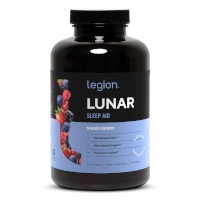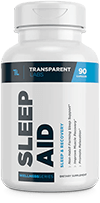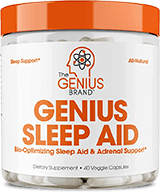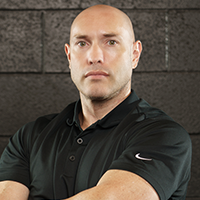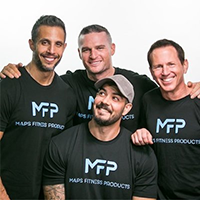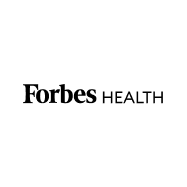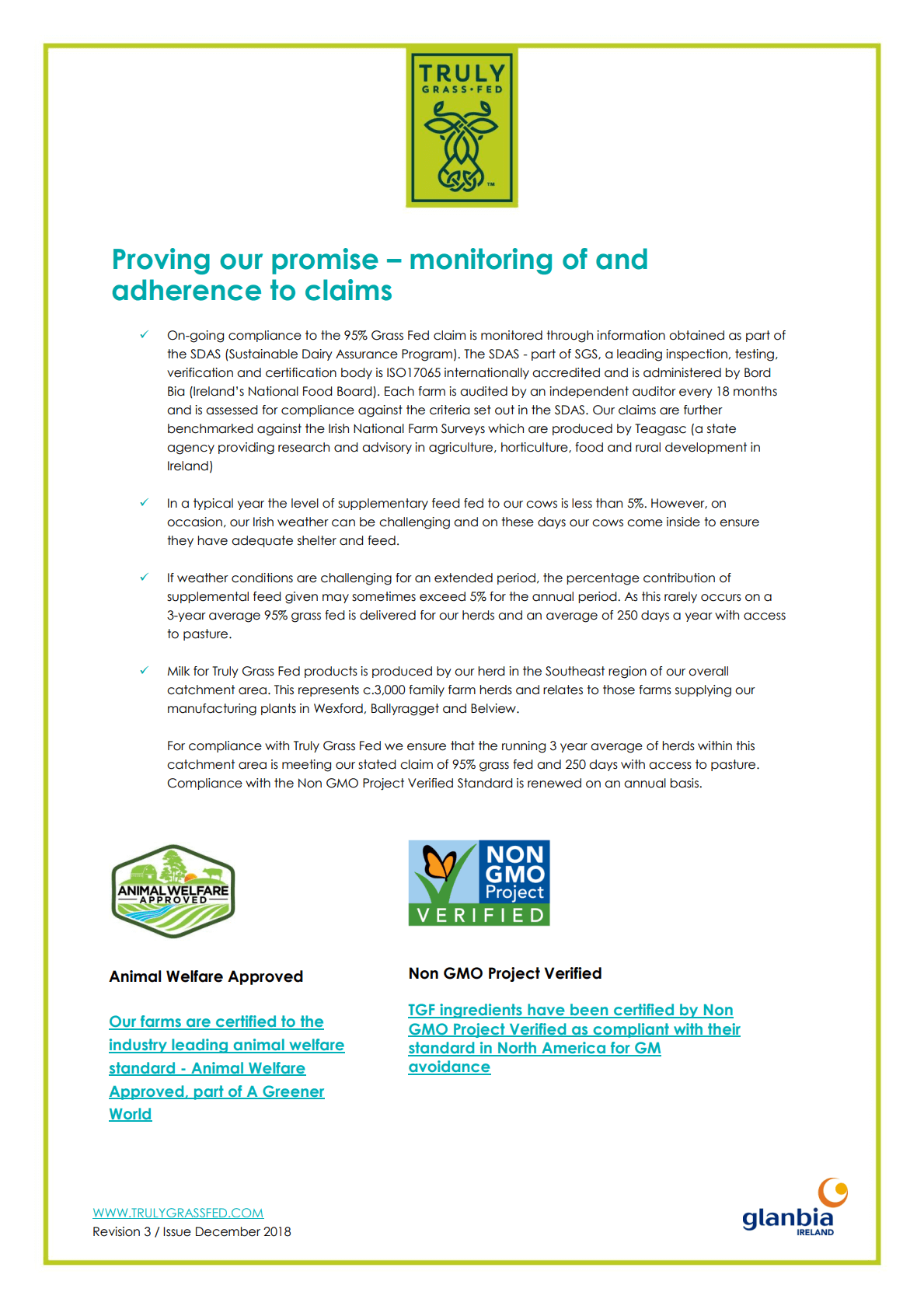Not happy with your purchase?
Simply let us know, and you'll get a full refund, no questions asked. And you don't even need to return anything.
So that means you can say "yes" now and decide later.
Legion Lunar Ingredients (3.5 grams per serving)
Glycine (3,000 milligrams per serving)
Glycine is an amino acid found mainly in foods that contain gelatin, like meat and seafood.
It acts as a mild sedative, which is why research shows that supplementation with glycine before bed reduces the time it takes to fall asleep and improves sleep quality.[8][9]
Additionally—and scientists aren’t sure why yet—but studies also show that glycine improves cognitive performance and reduces feelings of fatigue when sleep is impaired.[10]
The clinically effective dose of glycine is 3 grams.
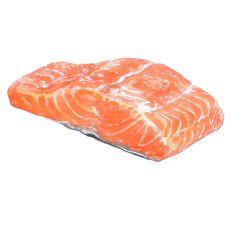
Melatonin (500 micrograms per serving)
Melatonin is a hormone that’s produced by the brain and found in foods like tomatoes, walnuts, strawberries, and olive oil.
It has powerful sedative and sleep-inducing effects, which is why research shows that supplementation with melatonin before bed . . .
- Reduces the time it takes to fall asleep[11][12]
- Can improve sleep quality[13][14][15][16]
- Reduces symptoms of jet lag[17]
- Can improve memory function[18]
The clinically effective dose of melatonin is between 500 micrograms and 5 milligrams.
Lunar contains 500 micrograms per serving because, for many people, more isn’t necessary to achieve the desired results. That said, individual response does vary, and if you need more melatonin to improve your sleep, we recommend 3 milligrams of melatonin with one serving of Lunar for optimal results.[19]

L-Theanine (400 milligrams per serving)
L-theanine is an amino acid found primarily in tea that helps balance the levels of two chemicals in the brain known as glutamate and GABA, which transmit nerve impulses.
This, in turn, can promote relaxation without causing drowsiness, which is why research shows that supplementation with L-theanine . . .
- Reduces the time it takes to fall asleep[20]
- Improves restfulness after sleep[21]
- Supports relaxation[22]
- Reduces the effects of mental stress[23]
The clinically effective dose of L-theanine is 400 milligrams.
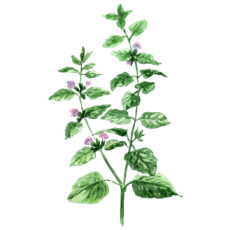
Gamma Aminobutyric Acid (100 milligrams per serving)
Gamma aminobutyric acid (GABA) is a neurotransmitter that binds to receptors between neurons and reduces their tendency to “fire” and transmit nerve impulses.
This, in turn, can reduce stress and excitement and promote calm and restfulness, which is why research shows that supplementation with GABA . . .
- May reduce the time it takes to fall asleep[24][25][26]
- Improves the perceived quality of sleep[27][28]
- Increases sleep efficiency[29]
The clinically effective dose of GABA is 100 milligrams.
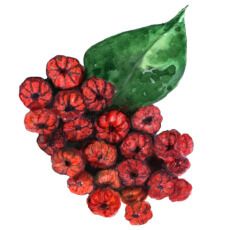
Naturally Sweetened and Flavored
While artificial sweeteners may not be as dangerous as some people claim, studies suggest that regular consumption of these chemicals may indeed be harmful to our health.[30][31][32][33][34][35]
That’s why we use natural sweeteners like stevia and xylitol instead. Research shows that these ingredients are not only safe but can also confer several health benefits, such as supporting weight management, antioxidant activity, digestive health, and more.[36][37][38][39][40][41]
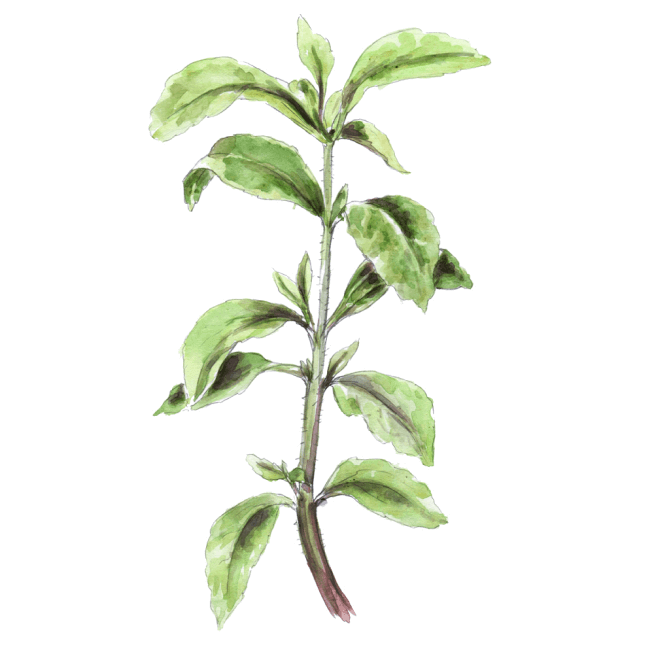
No Artificial Food Dyes, Fillers, or Other Unnecessary Junk
As with artificial sweeteners, studies show that artificial food dyes and fillers can cause negative effects in some people, including gastrointestinal toxicity and behavioral disorders.[42][43][44][45][46]
That’s why we use natural coloring and flavoring derived from fruits and other foods as well as naturally derived ingredients for improving texture, enhancing shelf life, and facilitating the manufacturing process.
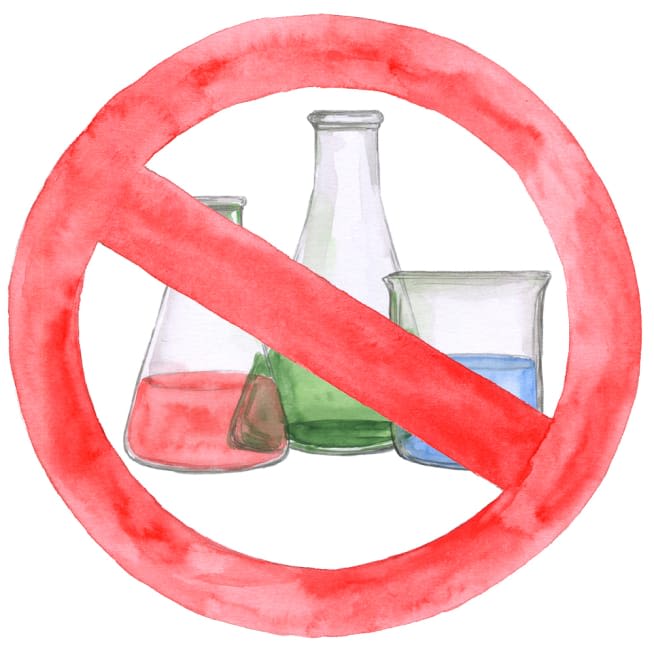
Lab-Tested for Purity and Accuracy
Lunar is lab-tested for purity and accuracy and certified to meet or exceed FDA and WADA safety guidelines.[47]
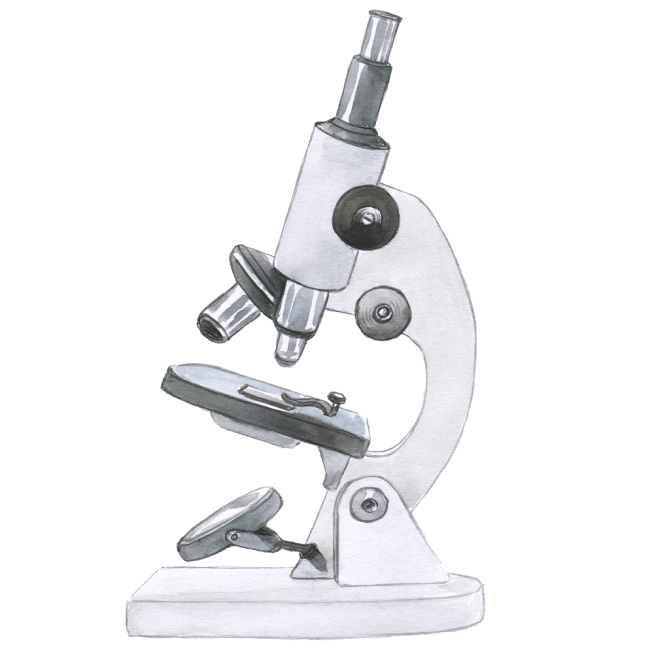
Made in the USA with Globally Sourced Ingredients
If you want to ensure the supplements you’re swallowing every day are safe and effective, you want to buy from a company that:
- Sources ingredients from premium suppliers around the world (great supplements require great raw materials)
- Tests all products for purity and accuracy in accredited laboratories (to conclusively verify safety and efficacy)
- Manufactures in America, which has some of the strictest regulations in the world
And that’s exactly what we do here at Legion.
See how Legion Lunar compares to the rest.
- Active Ingredients
- Clinically Effective Ingredients and Doses
- Glycine
- Melatonin
- L-Theanine
- Gamma Aminobutyric Acid
- Naturally Sweetened and Flavored
- Third-Party Lab Tested
- Labdoor Certified Brand
- Price Per Serving
-
Legion Lunar
Sleep Aid
- 3,500 mg
per serving - 3,000 mg
per serving - 500 mcg
per serving - 400 mg
per serving - 100 mg
per serving
-
Transparent Labs
Sleep Aid
- 2,041 mg
per serving - 1,000 mg
per serving - 3 mg
per serving - 200 mg
per serving - N/A
- $0.66
-
Genius
Sleep Aid
- 1,300.5 mg
per serving - 1,000 mg
per serving - 500 mcg
per serving - 100 mg
per serving - N/A
- $1.00
-
Jacked Factory
Build PM
- 1,224 mg
per serving - 5 mg
per serving - 200 mg
per serving - N/A
- $1.00
The #1 brand of naturally sweetened and flavored sports supplements.
We’ve sold over 5 million bags and bottles to over 1 million customers in 169 countries who have left us over 55,000 5-star reviews.
Clinically Effective Ingredients and Doses
Every active ingredient, form, and dose in Lunar is backed by peer-reviewed scientific research demonstrating clear benefits in healthy humans.
Naturally Sweetened and Flavored
Lunar is naturally sweetened with stevia and xylitol and naturally flavored with extracts from fruit, vegetables, plants and other foods.
Total Label Transparency
We clearly list the dose of each ingredient in Lunar on the label—no proprietary blends or hidden ingredients—so you can verify our formulation’s validity and effectiveness.
Lab-Tested for Purity and Accuracy
Lunar is lab-tested for purity and accuracy and certified to meet or exceed FDA and WADA safety guidelines.
Made in the USA
Lunar is made in America with globally sourced ingredients in NSF-certified, FDA-inspected facilities that adhere to Current Good Manufacturing Practice (cGMP) standards.
100% Money-Back Guarantee
If you don't absolutely love Lunar, you get a prompt and courteous refund. No forms or returns necessary.
Trusted by scientists, doctors, and everyday fitness folk alike.

Frequently Asked Questions
+References
Some popular sleep supplements are naturally sweetened and flavored. Some contain the right mix of high-quality ingredients. Some provide clinically effective doses. But only Lunar checks each of these boxes.↑
While artificial sweeteners may not be as dangerous as some people claim, studies suggest that regular consumption of these chemicals may indeed be harmful to our health. That’s why we use the natural sweeteners stevia and xylitol instead.↑
Every serving of Lunar contains 3.5 grams of active ingredients that have been shown to be safe and effective in peer-reviewed scientific research.↑
Each active ingredient in Lunar is backed by published scientific studies that show benefits in healthy humans.↑
That’s 1,312 pages of scientific research that shows Lunar works the way we say it does.↑
While artificial sweeteners may not be as dangerous as some people claim, studies suggest that regular consumption of these chemicals may indeed be harmful to our health. That’s why we use the natural sweeteners stevia and xylitol instead.↑
Did you know that some supplements contain dangerously high levels of toxins like lead, arsenic, and cadmium?
That’s why we rigorously test every ingredient for heavy metals, microbes, allergens, and other contaminants, ensuring they meet the strict purity standards set by the U.S. Food and Drug Administration (FDA) and World Anti Doping Agency (WADA).↑
Wataru Yamadera, Kentaro Inagawa, Shintaro Chiba, Makoto Bannai, Michio Takahashi, and Kazuhiko Nakayama, Sleep and Biological Rhythms 5, no. 2 (2007): 126–31. doi: 10.1111/j.1479-8425.2007.00262.x.↑
Kentaro Inagawa, Takenori Hiraoka, Tohru Kohda, Wataru Yamadera, and Michio Takahashi, Sleep and Biological Rhythms 4, no. 1 (2006): 75–77. doi: 10.1111/j.1479-8425.2006.00193.x.↑
Bannai M, Kawai N, Ono K, Nakahara K, Murakami N. Front Neurol. 2012;3:61. Published 2012 Apr 18. doi:10.3389/fneur.2012.00061. ↑
Zhdanova IV, Wurtman RJ, Morabito C, Piotrovska VR, Lynch HJ. Sleep. 1996;19(5):423-431. doi:10.1093/sleep/19.5.423.↑
Ferracioli-Oda E, Qawasmi A, Bloch MH. PLoS One. 2013;8(5):e63773. Published 2013 May 17. doi:10.1371/journal.pone.0063773.↑
Lemoine P, Nir T, Laudon M, Zisapel N. J Sleep Res. 2007;16(4):372-380. doi:10.1111/j.1365-2869.2007.00613.x.↑
van Geijlswijk IM, Mol RH, Egberts TC, Smits MG. Psychopharmacology (Berl). 2011;216(1):111-120. doi:10.1007/s00213-011-2202-y.↑
Ferracioli-Oda E, Qawasmi A, Bloch MH. PLoS One. 2013;8(5):e63773. Published 2013 May 17. doi:10.1371/journal.pone.0063773.↑
Fatemeh G, Sajjad M, Niloufar R, Neda S, Leila S, Khadijeh M. J Neurol. 2022;269(1):205-216. doi:10.1007/s00415-020-10381-w. ↑
Herxheimer A, Petrie KJ. Cochrane Database Syst Rev. 2002;(2):CD001520. doi:10.1002/14651858.CD001520.↑
Rimmele U, Spillmann M, Bärtschi C, et al. Psychopharmacology (Berl). 2009;202(4):663-672. doi:10.1007/s00213-008-1344-z.↑
Ferracioli-Oda E, Qawasmi A, Bloch MH. PLoS One. 2013;8(5):e63773. Published 2013 May 17. doi:10.1371/journal.pone.0063773.↑
Hidese S, Ogawa S, Ota M, et al. Nutrients. 2019;11(10):2362. Published 2019 Oct 3. doi:10.3390/nu11102362. ↑
Sarris J, Byrne GJ, Cribb L, et al. J Psychiatr Res. 2019;110:31-37. doi:10.1016/j.jpsychires.2018.12.014.↑
Higashiyama A, Htay HH, Ozeki M, Juneja LR, Kapoor MP. J Funct Foods. 2011;3(3):171-178. doi:10.1016/J.JFF.2011.03.009. ↑
Kimura K, Ozeki M, Juneja LR, Ohira H. Biol Psychol. 2007;74(1):39-45. doi:10.1016/j.biopsycho.2006.06.006.↑
Yamatsu A, Yamashita Y, Pandharipande T, Maru I, Kim M. 2016;25(2):547-551. Food Sci Biotechnol. Published 2016 Apr 30. doi:10.1007/s10068-016-0076-9.↑
Yamatsu A, Yamashita Y, Maru I, Yang J, Tatsuzaki J, Kim M. J Nutr Sci Vitaminol (Tokyo). 2015;61(2):182-187. doi:10.3177/jnsv.61.182/↑
Byun JI, Shin YY, Chung SE, Shin WC. J Clin Neurol. Jul 2018;14(3):291-295. doi:10.3988/jcn.2018.14.3.291.↑
Yamatsu A, Yamashita Y, Pandharipande T, Maru I, Kim M. Food Sci Biotechnol. 2016;25(2):547-551. Published 2016 Apr 30. doi:10.1007/s10068-016-0076-9. ↑
Yamatsu A, Yamashita Y, Maru I, Yang J, Tatsuzaki J, Kim M. J Nutr Sci Vitaminol (Tokyo). 2015;61(2):182-7. doi:10.3177/jnsv.61.182.↑
Byun JI, Shin YY, Chung SE, Shin WC. J Clin Neurol. Jul 2018;14(3):291-295. doi:10.3988/jcn.2018.14.3.291.↑
Basson AR, Rodriguez-Palacios A, Cominelli F. Front Nutr. 2021;8:746247. Published 2021 Sep 24. doi:10.3389/fnut.2021.746247.↑
Suez J, Korem T, Zilberman-Schapira G, Segal E, Elinav E. Gut Microbes. 2015;6(2):149-155. doi:10.1080/19490976.2015.1017700.↑
Qin X. Department of Surgery, University of Medicine and Dentistry of New Jersey, New Jersey Medical School, Newark, New Jersey, USA. Can J Gastroenterol. 2011 Sep;25(9):511. ↑
Shil A, Chichger H. Int J Mol Sci. 2021;22(10):5228. Published 2021 May 15. doi:10.3390/ijms22105228.↑
Suez J, Korem T, Zeevi D, et al. Nature. 2014;514(7521):181-186. doi:10.1038/nature13793.↑
Frankenfeld CL, Sikaroodi M, Lamb E, Shoemaker S, Gillevet PM. Ann Epidemiol. 2015;25(10):736-42.e4. doi:10.1016/j.annepidem.2015.06.083.↑
Peteliuk V, Rybchuk L, Bayliak M, Storey KB, Lushchak O. EXCLI J. 2021;20:1412-1430. Published 2021 Sep 22. doi:10.17179/excli2021-4211. ↑
Samuel P, Ayoob KT, Magnuson BA, et al. J Nutr. 2018;148(7):1186S-1205S. doi:10.1093/jn/nxy102. ↑
Ahmad J, Khan I, Blundell R, Azzopardi J, Mahomoodally MF. Trends Food Sci Technol. 2020;100:177-189. doi:10.1016/J.TIFS.2020.04.030. ↑
Salli K, Lehtinen MJ, Tiihonen K, Ouwehand AC. Nutrients. 2019;11(8):1813. Published 2019 Aug 6. doi:10.3390/nu11081813. ↑
Gasmi Benahmed A, Gasmi A, Arshad M, et al. Appl Microbiol Biotechnol. 2020;104(17):7225-7237. doi:10.1007/s00253-020-10708-7. ↑
Kasti AN, Nikolaki MD, Synodinou KD, et al. Microorganisms. 2022;10(4):744. Published 2022 Mar 30. doi:10.3390/microorganisms10040744. ↑
Feng J, Cerniglia CE, Chen H. Division of Microbiology, National Center for Toxicological Research, US Food and Drug Administration, AR , USA. Front Biosci (Elite Ed). 2012 Jan 1;4:568-86. ↑
Kanarek RB. Department of Psychology, Tufts University, Medford, Massachusetts, USA. Nutr Rev. 2011 Jul;69(7):385-91. ↑
Nigg JT, Lewis K, Edinger T, Falk M. Oregon Health and Science University, Portland, OR, USA. J Am Acad Child Adolesc Psychiatry. 2012 Jan;51(1):86-97.e8. ↑
McCann D, Barrett A, Cooper A, Crumpler D, Dalen L, Grimshaw K, Kitchin E, Lok K, Porteous L, Prince E, Sonuga-Barke E, Warner JO, Stevenson J. School of Psychology, Department of Child Health, University of Southampton, Southampton, UK. Lancet. 2007 Nov 3;370(9598):1560-7. ↑
Gao Y, Li C, Shen J, Yin H, An X, Jin H. Scientific and Technological College of Chemistry and Biology, Yantai Univ., Yantai, PR China. J Food Sci. 2011 Aug;76(6):T125-9. ↑
Did you know that some supplements contain dangerously high levels of toxins like lead, arsenic, and cadmium?
That’s why we rigorously test every ingredient in a third-party lab for heavy metals, microbes, allergens, and other contaminants, ensuring they meet the strict purity standards set by the U.S. Food and Drug Administration (FDA).↑
